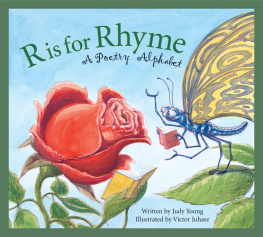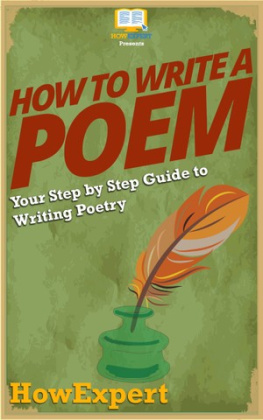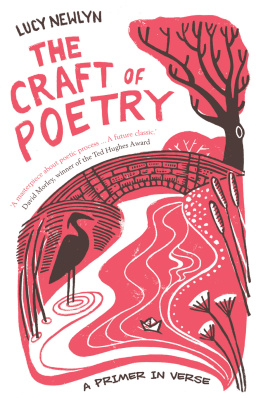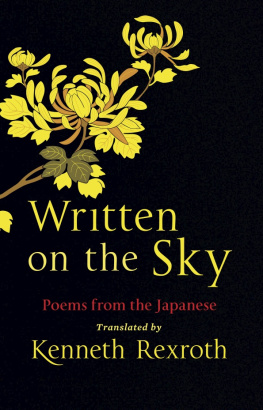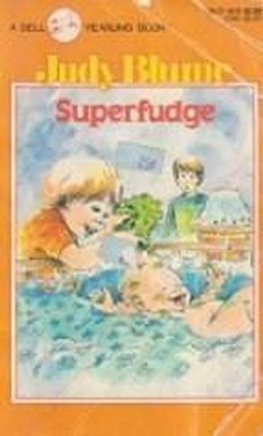
R is for Rhyme
A Poetry Alphabet
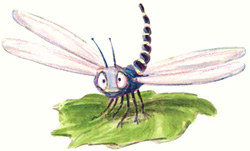
Written by Judy Young and Illustrated by Victor Juhasz
Text Copyright 2006 Judy Young
Illustration Copyright 2006 Victor Juhasz
All rights reserved. No part of this book may be reproduced in any manner without the express written consent of the publisher, except in the case of brief excerpts in critical reviews and articles. All inquiries should be addressed to:
Sleeping Bear Press
315 E. Eisenhower Parkway, Suite 200
Ann Arbor MI 48103
www.sleepingbearpress.com
2006 Sleeping Bear Press is an imprint of Gale.
Printed and bound in China.
10 9 8 7 6 5 4 3 (case)
10 9 8 7 6 5 4 3 2 1 (pbk)
Library of Congress Cataloging-in-Publication Data
Young, Judy.
R is for rhyme : a poetry alphabet / written by Judy Young;
illustrated by Victor Juhasz.
p. cm.
Summary: From acrostics and ballads to meter and metaphor, author and poet Judy Young has written a collection of poems to illustrate poetic tools, terms, and techniques. Each term or technique is demonstrated in an accompanying poem so readers can see the method at workProvided by publisher.
ISBN 978-1-58536-240-0 (case)
ISBN 978-1-58536-519-7 (pbk)
1. Childrens poetry, American. 2. PoetryAuthorshipJuvenile literature.
3. PoeticsTerminologyJuvenile literature. I. Juhasz, Victor. II. Title.
PS3625.O9654R15 2006
811.6dc222005027794
For Lisa Hunter, an excellent teacher and friend.
Thanks for sharing your third graders for poetry time.
JUDY

For Terri, whose smile is my daily poem.
VICTOR
A
In an acrostic poem, the title is the subject of the poem. It is usually only one or two words long. Each letter of the title starts a line of the poem. The title word is therefore written vertically (up and down) as the first letter of each line. Look at the first letters in each line of Drawing. Do you see the word drawing spelled out? Lewis Carroll included an acrostic, using the name of ten-year-old Alice Pleasance Liddell, in Through the Looking Glass.
There are many words that mean almost the same thing as another word. These words are called synonyms. For instance, big, large, huge, gigantic, and enormous are all synonyms. You can look up words in a book called a thesaurus to find synonyms.
Read Drawing again. What word is used to show that imaginations are captured with a crayon?
A is for Acrostic
Drawing
Delightful pictures Released onto paper As Wild Imaginations are Netted with the Grasp of a crayon.
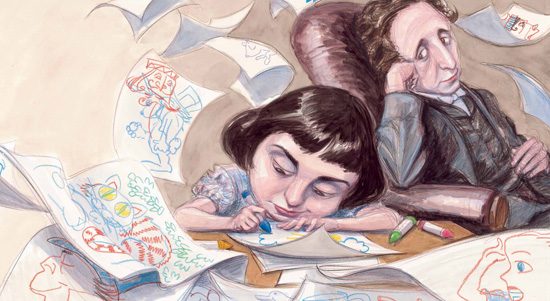
B
Long ago, storytellers, who traveled from town to town, were the primary source of news, education, and entertainment. Often, they told their tales in poetry forms called ballads. Traditionally, ballads were love stories that ended in tragedy. Many ballads have been put to music and sung. Henry Wadsworth Longfellow wrote the well-known ballad The Village Blacksmith. Stephen Vincent Bent and Robert Service also wrote ballads.
Ballads are written in groups of four lines. These groups are called stanzas. In each stanza, the last words in the second and fourth lines rhyme. Can you find the rhyming words in each stanza?
Poems often have a specific rhythm called meter. Meter is made of patterns of unstressed and stressed syllables. Each unit of the pattern is called a foot. In a ballad there are four feet, or beat patterns, in the first and third lines. There are only three feet in the second and fourth lines. Can you hear the meter when you read Ballad of the Butterfly and Rose aloud?
Why didnt the butterfly go south for the winter?
B is for Ballad
Ballad of the Butterfly and Rose
In early days of summer, came
A lovely butterfly.
His wings were painted with the hues
Of sunsets in the sky.
He flew around the gardens blooms,
However, what he chose
To land on was a tiny bud,
The smallest unborn rose.
He stayed there with the bud for weeks
Until it opened wide
And petals colored like the sun
Were waiting there inside.
The butterfly danced for his rose,
The rose collected dew,
A drink to give her butterfly,
And each day their love grew.
One evening under brilliant skies,
Bright yellow, orange, and red,
The butterfly and lovely rose,
Together, they were wed.
Soon summer passed and came the time
When roses start to fade
And butterflies leave for the south,
Yet, knowing that, he stayed.
The butterfly felt freezing winds
But would not leave his bride
And with his wings wrapped round his rose,
Together they both died.

C
A cinquain (sing-KANE) is any poem or stanza that has five lines. A poet named Adelaide Crapsey developed a type of cinquain poem based on Japanese poetry styles. A Crapsey cinquain has a syllable count of 2-4-6-8-2 syllables per line.
A Crapsey cinquain may or may not rhyme. In My Shadow, the poet chose to have the second and third lines rhyme. There are also two words inside the fourth line that rhyme. Can you find them? When two words in the same line rhyme, it is called internal rhyme.
When reading a poem, read it like you would read any other kind of writing. Instead of stopping when you come to the end of a line, follow the punctuation, pausing at commas and periods. Some lines do not end with a complete thought. The thought continues onto the next line. That is called enjambment. A good example of enjambment is how the fourth line contines onto the fifth line in My Shadow.
You can see through a shadow. What are some other things that are transparent?
C is for Cinquain
My Shadow
Always Attached to me, This black transparency. I cant escape the shape of my Shadow.
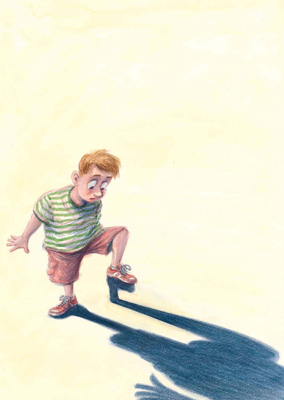
D
A doublet was invented by Lewis Carroll in 1879 as a word puzzle. The goal is to make a list of words that change, one letter at a time, to make a different word. The doublet is written one word under another to make a word ladder. The poem is then written around this word ladder. The first and last words of the word ladder are usually the title. They are related to each other in some manner, such as being opposites, synonyms, or associations. These words must also have the same number of letters.
Look at Rain to Snow. The first word of the doublet is rain. Look directly under the word rain and you will see raid. The letter n in rain was changed to a d to make raid. What letter changes next? What new word does it make? Do you see the list of eight words that change one letter at a time until rain finally changes to snow?
Have you ever been outside when rain changed to snow?
D is for Doublet
Rain to Snow
Rain falls Leaving the clouds that raid the sky. They said the day would be gray. I slid my hands in my pockets, Walking carefully not to slip in puddles Or slop mud on my pants. Then, in a magical moment, the drops began to slow and I watched As from dripping to drifting, rain changed to snow.
Next page
